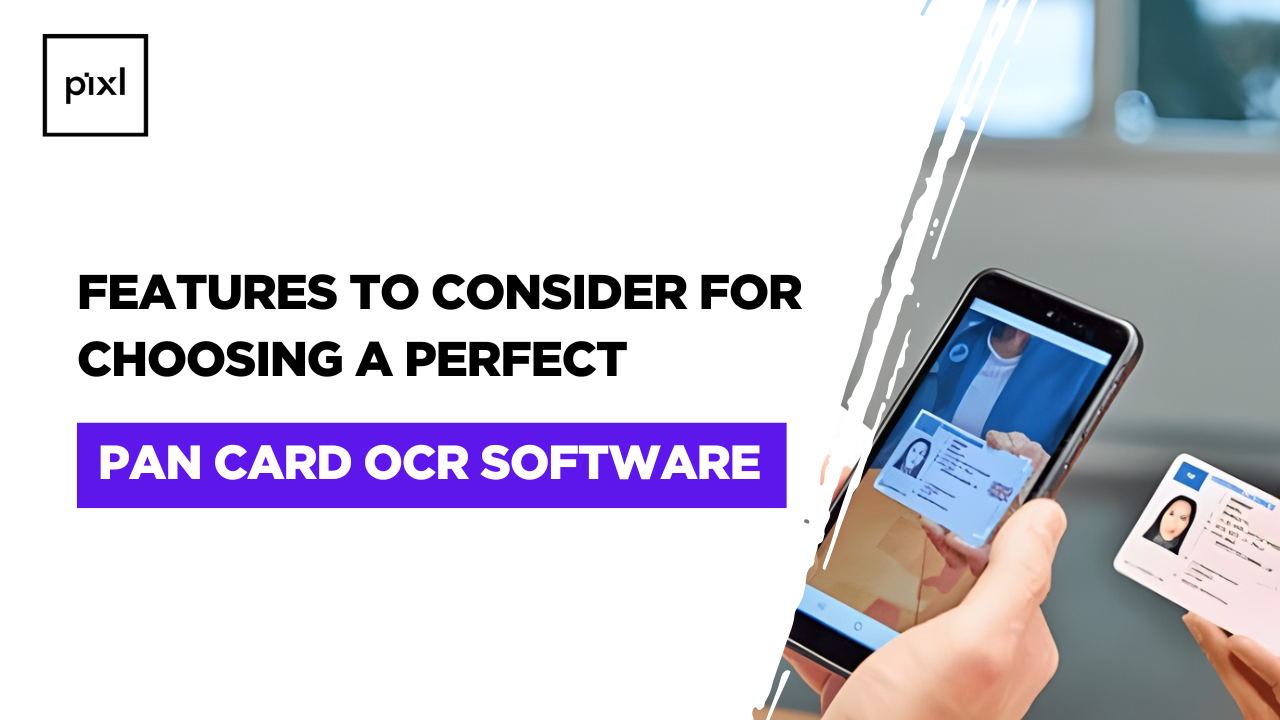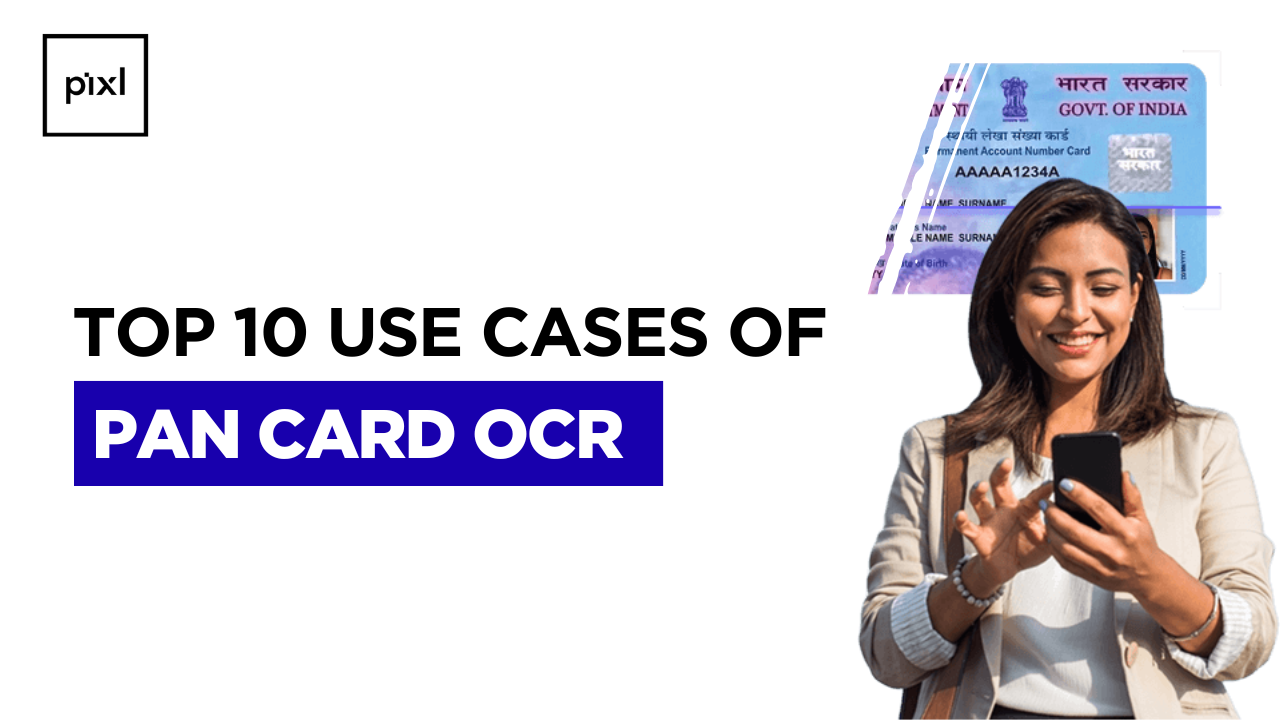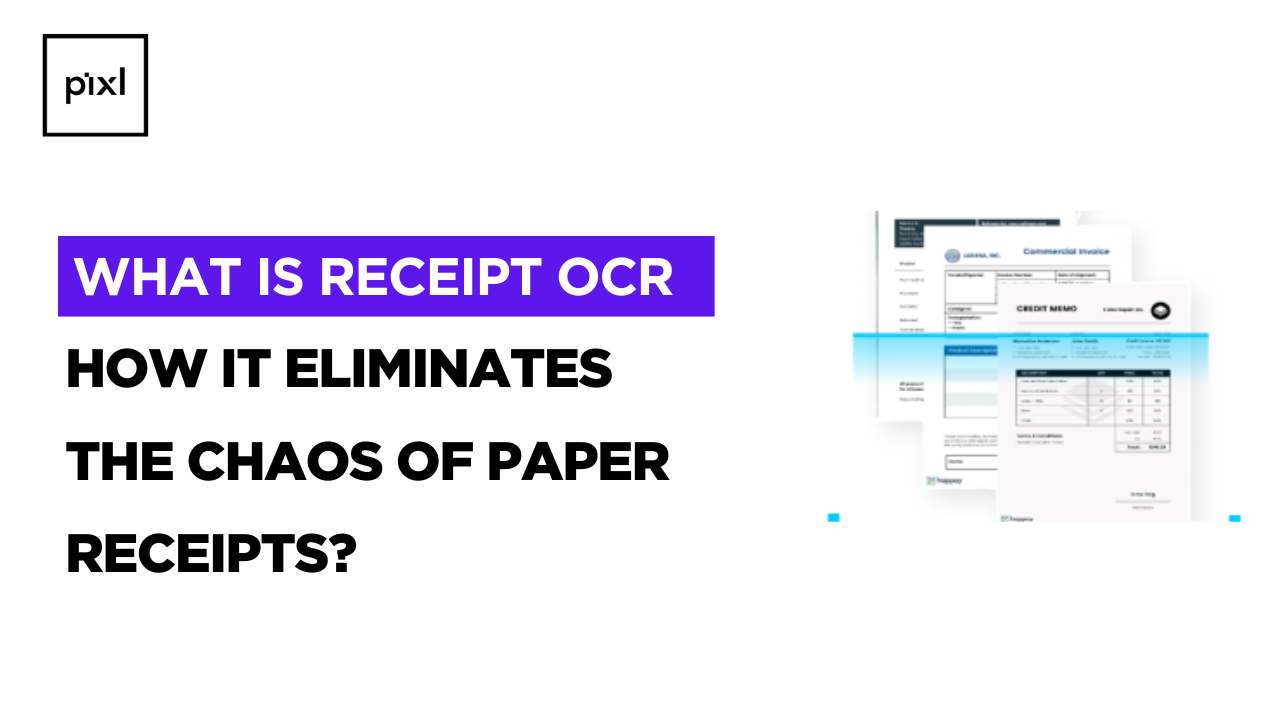A PAN Card OCR solution reads and interprets printed or handwritten details such as the cardholder’s name, PAN number, date of birth, and father’s name and converts them into machine-readable data. This process eliminates the need for manual entry, significantly reducing human errors and enhancing the overall speed of customer onboarding, verification, and KYC (Know Your Customer) operations.
For organizations in banking, fintech, insurance, and compliance-heavy sectors, implementing a reliable PAN Card OCR solution means more than just efficiency it ensures accuracy, regulatory compliance, and data security. As customer expectations grow and digital transformation accelerates, choosing the right PAN Card OCR software has become a strategic necessity.
In this blog, we’ll explore the key features to consider when selecting a PAN Card OCR, helping you make an informed decision that aligns with your business goals and operational needs.
Key features to consider when selecting a PAN Card OCR
1.Accuracy and Recognition Rate
Accuracy is the core of any PAN Card OCR solution. A high recognition rate ensures that crucial details like the PAN number, name, and date of birth are captured correctly, reducing manual verification and errors.
Modern AI-powered OCR systems use machine learning (ML) to recognize varied fonts, layouts, and even low quality scans with precision. This improves data integrity, speeds up KYC verification, and minimizes compliance risks.
When selecting a PAN Card OCR, opt for solutions with 98%+ accuracy, continuous learning capabilities, and built-in validation checks to ensure consistent and reliable data extraction.
2. Speed of Processing
Speed is a defining factor when choosing a PAN Card OCR solution, especially for businesses handling high volumes of customer verifications and onboarding requests. The faster the OCR processes documents, the quicker the data moves through KYC or compliance workflows directly improving operational efficiency.
Modern AI-driven OCR systems can extract and process data from a PAN card in just a few seconds, significantly reducing turnaround time compared to manual entry. This not only enhances productivity but also delivers a smoother and faster experience for end users.
When evaluating solutions, look for OCR tools that combine high-speed data extraction with real-time verification capabilities. The ideal PAN Card OCR should maintain a balance between processing speed and accuracy, ensuring fast results without compromising data quality.
3. User-Friendly Interface
A user-friendly interface ensures that employees or customers can use the PAN Card OCR software with minimal training. Intuitive dashboards, clear workflows, and simple upload options reduce errors and streamline operations. For organizations integrating OCR into digital onboarding or KYC workflows, a smooth interface improves adoption rates and overall efficiency.
4. Integration Capabilities
A robust PAN Card OCR should seamlessly integrate with existing systems such as CRM platforms, banking software, or KYC/AML solutions. Easy integration enables automated data flow, reduces manual intervention, and ensures that extracted information is immediately usable within your operational ecosystem. Check for API support, plugin availability, and compatibility with your tech stack when selecting a solution.
5. Data Security and Compliance
Since PAN cards contain sensitive personal information, data security and regulatory compliance are non-negotiable. OCR solutions should offer encryption, secure storage, and access controls to protect information. Additionally, compliance with GDPR, local data protection laws, and industry regulations is essential to avoid legal risks and maintain customer trust.
6. Customization Options
Every organization has unique workflows and requirements. A PAN Card OCR solution with customization options allows you to tailor data fields, validation rules, and reporting formats to match your business processes. Customizable OCR ensures flexibility in handling diverse document formats and scales effectively as your operations grow.
7. Support and Maintenance
Reliable vendor support and ongoing maintenance are crucial for ensuring consistent OCR performance. Choose providers offering technical assistance, software updates, and troubleshooting services. This reduces downtime, ensures compatibility with evolving technologies, and keeps your OCR system functioning optimally.
8. Cost-Effectiveness
While features and capabilities are important, cost-effectiveness ensures you get value without overspending. Evaluate pricing models in relation to accuracy, speed, integration capabilities, and support services. Consider the long-term ROI of reduced manual work, faster onboarding, and compliance adherence when comparing costs.
9. Comparative Analysis
Compare popular PAN Card OCR solutions to understand their strengths and weaknesses:
- Accuracy rates and recognition capabilities
- Processing speed and batch handling
- Ease of integration and user experience
- Security measures and compliance adherence
- Customization options and support services
- Cost structure and ROI
A thorough comparison helps you identify the solution that best fits your organization’s needs, budget, and operational goals.
10. Comparative Analysis
When selecting a PAN Card OCR solution, it’s important to conduct a comparative analysis to understand how different tools stack up in terms of features, performance, and cost. Key factors to compare include:
- Accuracy and Recognition Rate: How reliably does the OCR extract PAN details such as the PAN number, name, and date of birth? Look for solutions with 98%+ accuracy.
- Processing Speed: Assess how quickly each tool can handle individual and bulk PAN card processing, especially for high-volume operations.
- Integration Capabilities: Evaluate compatibility with existing software systems, CRM platforms, KYC workflows, or banking applications.
- User Interface: Consider ease of use and the learning curve for employees or customers interacting with the tool.
- Security and Compliance: Check for encryption standards, access controls, and adherence to GDPR and local data protection regulations.
- Customization Options: Determine whether the solution allows tailored data fields, validation rules, and reporting formats.
- Support and Maintenance: Look for vendors offering robust technical support, timely updates, and troubleshooting services.
- Cost-Effectiveness: Compare pricing models in relation to the features, scalability, and long-term ROI.
By systematically comparing these aspects, organizations can identify the best PAN Card OCR solution that best aligns with their operational requirements, budget, and compliance needs, ensuring a balance between efficiency, accuracy, and cost.
Top Leaders in PAN Card OCR solution providers
In India’s fast-growing digital verification space, several providers are leveraging Optical Character Recognition (OCR) technology to simplify PAN card data extraction. While a few solutions focus on speed or affordability, Pixl stands out for delivering a balanced mix of accuracy, scalability, and secure integration.
Pixl PAN Card OCR
Pixl offers an advanced OCR solution built to handle real-world challenges from low-resolution images to large-scale data extraction. It captures critical PAN card details such as name, PAN number, date of birth, father’s name, photograph, and signature with high precision.
Key strengths:
- High Accuracy: Ensures consistent data capture even from imperfect inputs.
- Fast Processing: Extracts and verifies PAN data in seconds.
- Seamless Integration: APIs and SDKs enable smooth deployment into onboarding, KYC, or enterprise systems.
- Enterprise-Grade Security: Encryption and compliance with data protection norms safeguard sensitive information.
- Bulk Scalability: Efficiently handles large-volume document processing without slowing down performance.
Pixl’s comprehensive platform and support make it a top choice for banks, fintech companies, government agencies, and digital businesses that depend on reliable identity verification.
Deepvue
Deepvue provides a PAN Card OCR API designed for real-time data extraction. It emphasizes high accuracy and smooth API integration, making it suitable for organizations handling large verification volumes. However, its scope is narrower, focusing mainly on extraction rather than full-scale workflow automation.
Surepass
Surepass offers a verification-centric PAN OCR API built for speed and fraud prevention. It integrates easily with KYC and onboarding systems, helping businesses shorten verification times and reduce operational costs. Its specialization lies in preventing identity misuse and automating onboarding at scale.
KlearStack
KlearStack takes a data-intelligence approach, using context-aware OCR to not only read but also interpret PAN card details. Its AI-driven engine supports multiple document types, making it suitable for enterprises that need smart data classification and analytics alongside OCR.
Why Pixl Leads the Market?
While each competitor delivers distinct value, Pixl PAN Card OCR combines all key elements speed, accuracy, integration ease, and compliance into one cohesive system. Its flexibility across industries and readiness for high-volume workflows position it as a leader in document automation and PAN data intelligence.
If your business demands reliability, data accuracy, and scalable performance, Pixl offers an end-to-end OCR ecosystem that ensures both compliance and efficiency.
Conclusion
PAN Card OCR has become essential for businesses aiming to automate verification, enhance accuracy, and maintain compliance. Among the top providers, Pixl PAN Card OCR stands out for its balance of precision, speed, and scalability making it a reliable choice for enterprises seeking seamless document intelligence and faster customer onboarding.



